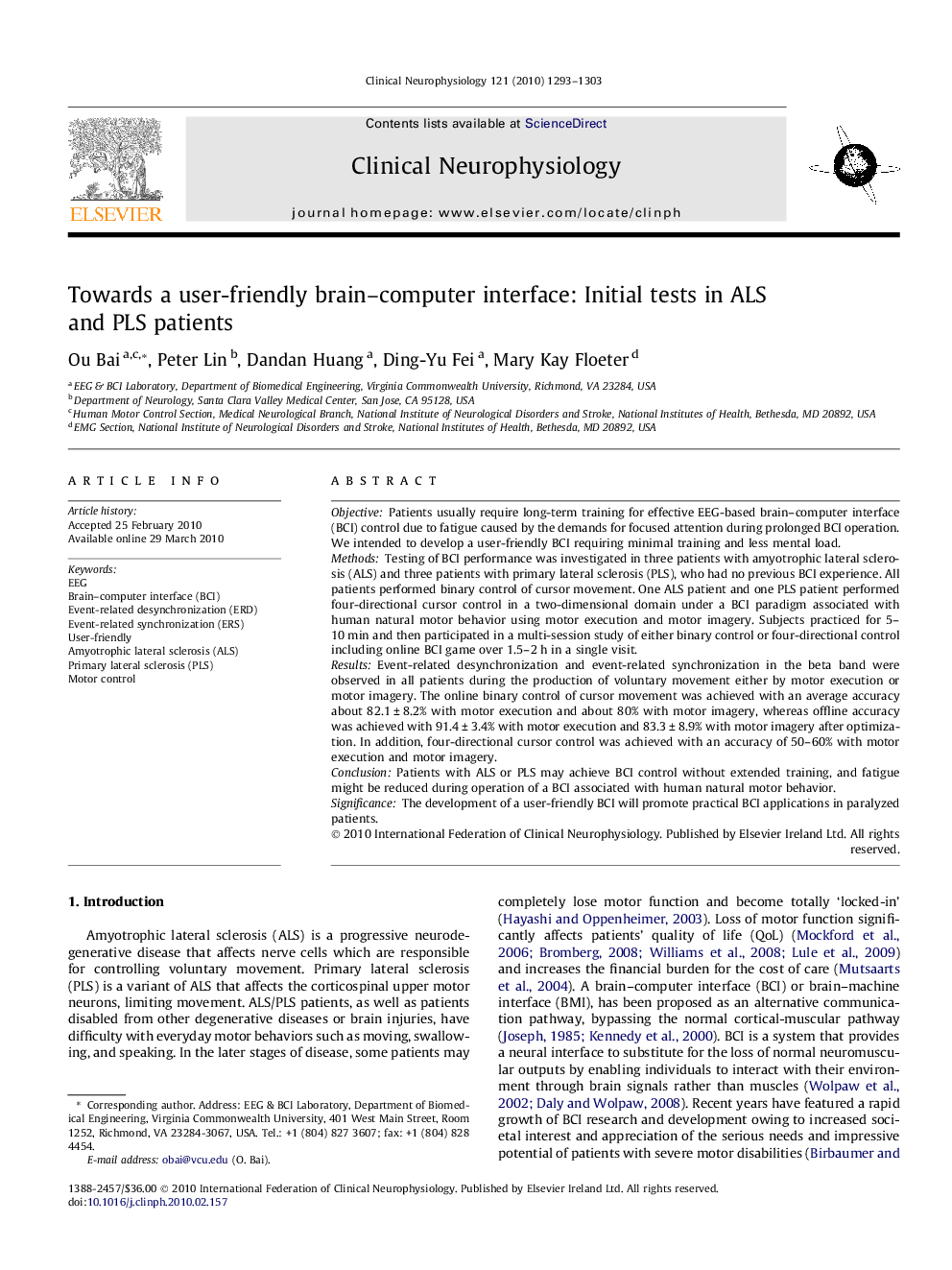| Article ID | Journal | Published Year | Pages | File Type |
|---|---|---|---|---|
| 3044852 | Clinical Neurophysiology | 2010 | 11 Pages |
ObjectivePatients usually require long-term training for effective EEG-based brain–computer interface (BCI) control due to fatigue caused by the demands for focused attention during prolonged BCI operation. We intended to develop a user-friendly BCI requiring minimal training and less mental load.MethodsTesting of BCI performance was investigated in three patients with amyotrophic lateral sclerosis (ALS) and three patients with primary lateral sclerosis (PLS), who had no previous BCI experience. All patients performed binary control of cursor movement. One ALS patient and one PLS patient performed four-directional cursor control in a two-dimensional domain under a BCI paradigm associated with human natural motor behavior using motor execution and motor imagery. Subjects practiced for 5–10 min and then participated in a multi-session study of either binary control or four-directional control including online BCI game over 1.5–2 h in a single visit.ResultsEvent-related desynchronization and event-related synchronization in the beta band were observed in all patients during the production of voluntary movement either by motor execution or motor imagery. The online binary control of cursor movement was achieved with an average accuracy about 82.1 ± 8.2% with motor execution and about 80% with motor imagery, whereas offline accuracy was achieved with 91.4 ± 3.4% with motor execution and 83.3 ± 8.9% with motor imagery after optimization. In addition, four-directional cursor control was achieved with an accuracy of 50–60% with motor execution and motor imagery.ConclusionPatients with ALS or PLS may achieve BCI control without extended training, and fatigue might be reduced during operation of a BCI associated with human natural motor behavior.SignificanceThe development of a user-friendly BCI will promote practical BCI applications in paralyzed patients.
